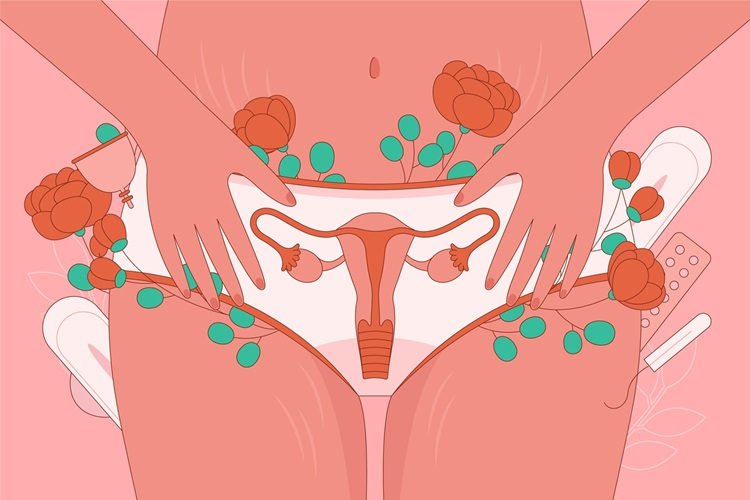What are the required steps to take if exposed to HIV
Exposure to the Human immunodeficiency virus can be initially frightening and lonely. Unfortunately, most people still believe in myths about the virus and continue to stigmatize HIV and those living with it. This can make it difficult for individuals to seek help or support after a possible exposure. This article will focus on the sexual route of transmission, brief facts about HIV, how it is transmitted, and how to prevent getting infected.
What is HIV?
The human body is home to different types of immune cells, which work around the clock to prevent us from getting sick. HIV is a virus that causes a depletion of the immune cells that leaves individuals more prone to infections, including cancers. It’s essential to know that there is a delay in the onset of symptoms after infection, while most people living with HIV experience flu-like symptoms a few weeks after infection- and can be asymptomatic for years despite the virus damaging their immune system. According to the UK National health service (NHS), the most common symptoms1 include:
- Swollen lymph nodes.
- Fever.
- Sore throat.
- Tiredness.
- Body rashes
- Joint pain.
- Muscle pain.
- Swollen glands.
- Diarrhea.
At the moment, there is no cure for HIV. However, it is no longer a death sentence; there are various effective treatment options that significantly improve the patient’s quality of life, block the chain of transmission, and can allow such individuals to live to their total life expectancy. When HIV infection is left untreated, it leads to acquired immunodeficiency syndrome known as AIDS, which means the level of immune cells in your body is very low. You begin to suffer from opportunistic infections. You need to know that AIDS cannot be transmitted as it is the result of years of HIV infection. On the other hand, HIV can be transmitted, and medication can prevent the virus from progressing to AIDS.
HIV exposure
Against popular belief, HIV is not that easy to get, and there are a few ways to get infected with the virus. You can’t have HIV if you are:
- Bitten by any insect.
- Hanging out with person(s) living with HIV.
- Hugging, shaking hands, or sharing a glass.
- Kissing (except both parties have broken skin or sores).
- Sharing or shared a toilet after an infected person.
- In- close contact with their sweats or tears
- Consumed food prepared by someone with HIV
It is rare and almost impossible to get HIV from performing or receiving oral sex. In this instance, skin must be broken for transmission to occur. It is also rare for HIV to be transmitted during female-to-female intimacy.
However, your risk of being exposed to HIV is higher, if you have been in contact with the HIV-positive individual and;
- Had unprotected vaginal and anal sex (no condom or medication)
- I have had a needle stick injury with contaminated blood.
- Have shared a needle with an infected individual.
- Have been exposed to infected blood on broken skin.
Also, pregnancy, birth, and breastfeeding carry a significant risk of transmission of HIV from mother to baby if no precautions are taken.
The table below shows the risk-per-exposure of various activities. The estimated risk of contracting HIV for different activities assumes that the other individual is HIV positive.
Activity
Risk-per-exposure
Vaginal sex, female-to-male, no condom
0.04% (1 in 2380)
Vaginal sex, female-to-male, no condom, undetectable viral load
0%
Vaginal sex, male-to-female, no condom
0.08% ( 1 in 1234)
Vaginal sex, male-to-female, no condom, undetectable viral load
0%
Receptive anal sex, no condom
1.38% (1 in 72)
Receptive anal sex, no condom, undetectable viral load
0%
Insertive anal sex, no condom
0.11% (1 in 909)
Insertive anal sex, no condom, undetectable viral load
0%
Receptive fellatio, no condom, viral load unknown
Estimates range from 0.00% to 0.04% (1 in 2500)
Pregnancy and childbirth, no preventative measures
22.6% (1 in 4)
Pregnancy and childbirth, undetectable viral load
0.14% (1 in 715)
Injecting drug use
0.63% (1 in 518)
Needlestick injury with contaminated blood
0.23% (1 in 435)
Blood transfusion with contaminated blood
92.5% (9 in 10)
Source: aidsmap.com. 2022. Estimated HIV risk per exposure [online]. Accessed 4th, February 2022.
*These statistics are only an estimate and will be greatly affected by the presence of other sexually transmitted infections and the infected individual’s viral load.*
What you should do after exposure to HIV via sexual route
After exposure, it is advised you get in touch with a health provider center such as a sexual health clinic or accident and emergency department as soon as possible. They will be able to guide you through the next steps. You will be provided a complete sexually transmitted infections screen, including an HIV test. The screenings will show if you have any infection prior to this encounter.
If appropriate, the health provider can supply you with post-exposure prophylaxis, also known as PEP medication. This medication can only be given in emergencies and within 72 hours of exposure. It is not 100 percent effective; if taken correctly for four weeks, it drastically lowers your risks of the virus establishing itself in your body.
As previously mentioned, exposure to HIV does not always mean you will become infected, and your health provider may not always deem it appropriate to administer PEP. After the exposure, you should retest for HIV; your health provider will discuss the best length of time between the retests and may offer one or more, usually a few weeks and then a few months after the initial test. The reason is that it can take a long time for the viral load to become detectable.
During the period between retests, it is essential to act with the same level of precaution as you would if you were certain you were HIV-positive to prevent possible transmission. This means that you should be careful with your bodily fluids and avoid having unprotected sex until you have been given the clear from your doctor.
If your test comes back positive, your doctor will discuss further tests and medication to effectively control the infection and allow you to live a long and happy life.
Revolutionary New Approaches to HIV Testing in 2023: Pioneering Advances in Detection and Prevention
In 2023, the field of HIV testing has witnessed remarkable advancements, revolutionizing the landscape of detection and prevention. Through pioneering research and technological breakthroughs, scientists and healthcare professionals have developed innovative approaches that enhance the accuracy, accessibility, and convenience of HIV testing.
Fourth-Generation HIV Testing
One of the most significant developments in HIV testing is the emergence of fourth-generation assays. According to Medical News Day, unlike previous generations, these tests can simultaneously detect both HIV antibodies and p24 antigens, enabling early detection of the virus before antibodies are produced. By shortening the window period—the time between infection and detectability—fourth-generation tests reduce the chances of false negatives and allow for timely intervention and treatment initiation. This breakthrough has a substantial impact on preventing further transmission and improving patient outcomes.
Point-of-Care Testing
The advent of point-of-care testing (POCT) has transformed HIV diagnostics, bringing testing directly to the patient's location. POCT allows for rapid, accurate, and on-site HIV testing, eliminating the need for laboratory infrastructure and reducing turnaround times for results. With the introduction of portable and user-friendly testing devices, healthcare workers can now administer tests in non-clinical settings, such as community centers, outreach programs, and remote areas, facilitating greater access to testing services and targeting high-risk populations.
Self-Testing Kits
Self-testing kits have gained significant traction in recent years due to the privacy, convenience, and empowerment they offer to individuals seeking to know their HIV status. These kits include simple instructions and all the necessary components for self-administration and interpretation of results. By enabling individuals to test discreetly and privately in the comfort of their homes, self-testing kits remove barriers to testing, such as stigma, fear, and inconvenience, promoting early diagnosis, prevention, and linkage to care.
Novel Biomarker-Based Tests
Researchers are constantly exploring innovative ways to improve HIV testing accuracy and efficiency. Biomarker-based tests focus on detecting specific substances or markers associated with HIV infection. For instance, studies have shown promising results using dried blood spot samples, saliva-based tests, and oral fluid-based tests, which provide non-invasive and cost-effective alternatives to traditional blood-based tests. These novel approaches have the potential to expand testing options and reach populations that may face challenges with conventional testing methods.
Utilizing Artificial Intelligence
Artificial Intelligence (AI) has emerged as a powerful tool in HIV testing. Machine learning algorithms can analyze vast amounts of data, identify patterns, and predict HIV infection risk accurately. AI-powered chatbots and virtual assistants can provide personalized and confidential counseling, answer queries, address concerns, and deliver accurate information on HIV testing, prevention strategies, and treatment options. Integrating AI into HIV testing programs enhances user experience, increases outreach, and improves engagement, ultimately leading to better health outcomes.
Bottom-Line
The year 2023 has brought groundbreaking advancements in HIV testing, with innovative approaches that promise to transform the way we detect and prevent HIV infection. Fourth-generation testing, point-of-care diagnostics, self-testing kits, biomarker-based tests, and the integration of AI technologies are revolutionizing HIV testing, making it more accessible, accurate, and user-friendly. These developments have the potential to expand testing coverage, improve early detection rates, reduce stigma, and ultimately contribute to the global goal of ending the HIV/AIDS epidemic.
Written by: Paulina Dudynska
Edited by: Damilola Elewa







Comments (0)